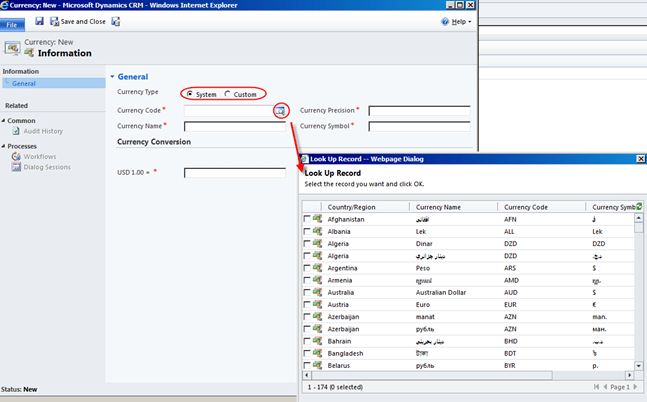Blog

Dynamics CRM Multi-Currency: How does it work?
Is your organization in need of a customer relationship management system that can support transactional data in multiple currencies? If the answer is “yes”, then Microsoft Dynamics CRM Multi-Currency system may be the one for you.
In Dynamics CRM, each system entity record (Opportunity, Quote, Order, Invoice, etc.) or custom entity record can be displayed in their own transaction currency. Base currency(such as the currency used at your company headquarters) amounts are also reserved on each record, allowing you to accurately report on and analyze all data across the organization in a single currency.
Here’s how Dynamics CRM Multi-Currency works:
When setting up your Dynamics CRM organization, you’re asked to select your organizations base currency. This is usually the currency that your company headquarters uses. Once your CRM organization is set up, this currency is set up in your system and automatically becomes the default organization currency used when creating new records. An administrator can then start adding additional currencies in your organization. When adding a new currency, you can select from the available list of 174 currencies the system provides, or opt to create a custom currency.
After you select the currency you want to add, you indicate the current exchange rate which is the value equal to 1 of your base currency. These exchange rates are maintained manually, but a custom process/3rd party solution can be deployed to update them automatically. Once your currencies have been added, users can opt to set one of the additional currencies as their default or continue to use the organizations default base currency. This becomes the default currency on each record they create, but it can be changed. Each record will display currency amounts in the chosen currency for the record as well as the base currency amounts and exchange rate. So you can report on and analyze data based on the currency selected for the record or utilize the base currency amounts in order to report on data across the entire organization. The currency and amounts on each record are displayed the same for every user.
When exchange rates change in your currency table, the base currency amounts and exchange rate on existing records remains the same, allowing you to keep the history. If a record was pre-existing but still open (such as an Opportunity that hasn’t been Won yet), the base currency amounts and exchange rate on the record will update when you modify one of its currency amounts, change the currency, or when you close the Opportunity. However, a custom process can be set up to update existing records based on certain criteria if, for example, you are reporting on Open Opportunities utilizing the base currencies and you needed to keep it up to date.
For more information on how currencies work in Dynamics CRM, you can read more about it here:
http://msdn.microsoft.com/en-us/library/gg328355.aspx
If you need help setting up your Dynamics CRM Multi Currency system, please reach out to us.
www.beringer.net / 856-910-7771





